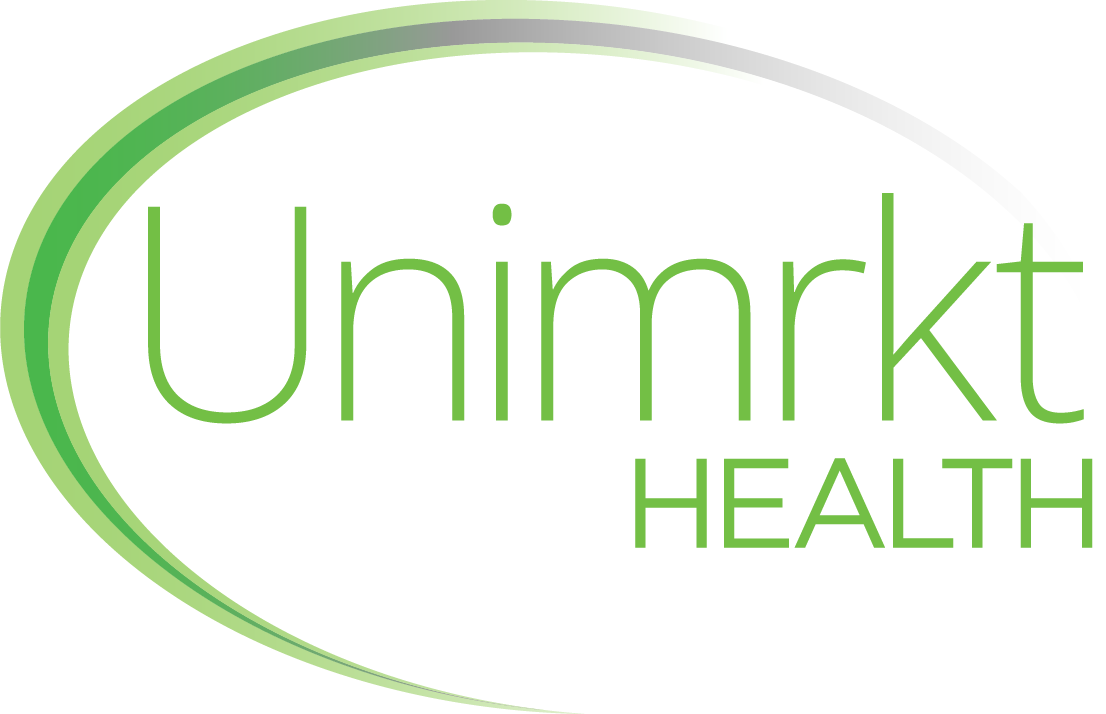7 Winning Strategies to Strengthen Payer-Provider Business Relationship
- Unimrkt Healthcare » Blog » 7 Winning Strategies to Strengthen Payer-Provider Business Relationship
The payer-provider relationship is fundamental for ensuring that patients receive the care they need while also managing the cost of that care. Public payers in healthcare typically fund healthcare services, while providers deliver them. But who are the payers? They involve players like insurance companies or government programs. On the other hand, healthcare providers include entities like hospitals, doctors, and clinics. The coordination between these two entities ensures that financial transactions align with patient treatment, which impacts care delivery and reimbursement policies on a significant scale. However, the payer-provider relationship faces several challenges that, if not addressed, can potentially lead to the collapse of the entire healthcare infrastructure. In this guide, we are going to reveal seven winning strategies that will help strengthen the payer-provider business relationship.
What’s So Special About Modern Business Relationships Between Providers and Public Payers in Healthcare?
The payer-provider relationship is special because it shapes not only the financial viability of the healthcare system but also the quality of patient care. It’s a key component in achieving better health outcomes and sustainable healthcare delivery. Here are several key reasons why this relationship is special:
- Coordination of Care and Shared Financial Risk: In the modern business scene, many providers and public payers in healthcare share financial risks through value-based care models. In these arrangements, providers are often paid based on how efficient and effective care they provide. Their compensation may depend on patient outcomes and satisfaction, not just the volume of services delivered. The shift from fee-for-service to value-based models has made the payer-provider relationship more collaborative.
- Data Sharing and Transparency: The relationship between providers and public payers in healthcare fosters the exchange of vital information such as patient health data, claims information, and treatment outcomes. This data sharing enables both parties to better understand care patterns, optimize treatment plans, and reduce inefficiencies. It also helps in improving patient health outcomes by ensuring that providers have up-to-date information and payers can monitor the effectiveness of treatments.
- Regulatory and Compliance Responsibilities: Both providers and public payers in healthcare must navigate a complex regulatory environment that governs healthcare reimbursements, patient rights, and privacy laws (such as HIPAA in the U.S.). Their ability to work together to ensure compliance with these regulations is essential to maintaining the integrity and legality of the healthcare system.
- Impact on Patient Experience: The payer-provider relationship influences the patient’s experience within the healthcare system. The ease of insurance coverage, the clarity of billing, and the quality of care depend on how well the payer and provider cooperate. Effective collaboration can result in better service for patients, while poor relationships can lead to delays, confusion, or gaps in care.
9 Common Hurdles of Payer-Provider Relationships That Can Impact Healthcare Collaboration
The payer-provider business relationship, while essential for delivering quality healthcare, comes with several challenges. As hinted earlier, these challenges can impact the efficiency, quality of care, and financial sustainability of the entire healthcare system on a massive scale. Let’s discuss these challenges in detail:
- Reimbursement Disputes: Providers often feel that the reimbursement they receive from payers does not adequately cover the costs of care delivery, especially with low-margin services. On the other hand, digital healthcare payers seek to control costs and may push for lower reimbursement rates or more stringent approval processes. Such a misalignment can result in payment delays, disputes, and strained relationships.
- Complexity of Billing and Coding: Healthcare billing and coding are notoriously complex, and errors can occur in the submission of claims. Providers need to accurately document and code their services to ensure they are reimbursed correctly. Payers, in turn, must verify that claims meet the necessary criteria before processing payments. Mistakes in billing or coding can lead to claim rejections, delays in payment, or even fraud investigations, creating frustration on both sides.
- Value-Based Care Transition: While value-based care models (which tie reimbursement to patient outcomes rather than the volume of services provided) are gaining traction, the transition from fee-for-service to value-based models is often a challenging process. For providers, there is a learning curve in terms of how to implement evidence-based practices and measure outcomes effectively. For digital healthcare payers, ensuring that providers comply with performance metrics and delivering appropriate incentives can be complicated.
- Data Sharing: The healthcare industry relies on vast amounts of data to make informed decisions. However, under many circumstances, data sharing between providers and public payers in healthcare can be difficult due to interoperability issues. Different systems, technologies, and standards make it hard for these entities to exchange patient data seamlessly. Without proper integration, both payers and providers can face inefficiencies, errors, and missed opportunities for improving patient care.
- Administrative Burden: The administrative load placed on both digital healthcare payers and providers to manage claims, authorizations, audits, and compliance is significant. These administrative tasks take away time and resources from focusing on patient care. For providers, dealing with payer requirements such as prior authorizations and pre-certifications can be frustrating and time-consuming, impacting their ability to deliver timely care.
- Conflicting Priorities: Payers and providers often have differing priorities. Payers are focused on controlling costs, minimizing risks, and ensuring efficiency, while providers are focused on delivering the best possible care to patients. These conflicting priorities can lead to tension, especially when payers impose restrictions that providers believe limit their ability to offer optimal care.
- Patient Experience and Satisfaction: The relationship between payers and providers also impacts the patient experience. If there are delays in authorizations, issues with coverage, or miscommunications between the payer and provider, patients may face confusion, delays in treatment, and dissatisfaction. Both parties need to coordinate to ensure that the patient’s journey is as smooth as possible.
- Provider Network Adequacy: Payers rely on a network of healthcare providers to deliver services to their members. If a provider is not in-network, patients may face higher costs or challenges in accessing care. Conversely, providers may feel that being in certain networks limits their ability to negotiate better rates or restrictions on the types of services they can offer. Finding a balance that works for both payers and providers is a constant challenge.
- Changing Consumer Demands: The rise of consumer-driven healthcare, where patients are taking on more financial responsibility through high-deductible plans and health savings accounts (HSAs), adds another layer of complexity. Providers are forced to adapt to patients’ increasing involvement in their healthcare decisions, while payers must ensure that insurance products meet the needs of more informed, cost-conscious consumers.
7 Proven Strategies to Strengthen Payer-Provider Partnerships for Better Healthcare
Here are seven proven strategies to build and maintain a strong, collaborative relationship between providers and public payers in healthcare:
Leverage Value-Based Contracts for Mutual Success
- Align Goals for Better Outcomes: Negotiate value-based contracts that focus on improving patient health outcomes instead of volume-based services. These agreements encourage digital healthcare payers and providers to work together to prioritize quality care, promoting preventive measures and reducing unnecessary treatments, which ultimately benefits both parties by lowering overall healthcare costs.
- Incentivize Preventive Care: Value-based contracts incentivize providers to focus on keeping patients healthy through preventive care. By proactively managing patient health, both payers and providers aim to avoid costly interventions, thereby lowering long-term healthcare expenses while improving patient well-being. This collaborative approach fosters a stronger, more efficient relationship between both stakeholders.
Invest in Technology and Interoperability
- Electronic Health Records (EHR) and Claims Integration: Investing in technology that ensures smooth sharing of patient data between payers and providers can streamline processes, reduce errors, and improve the overall efficiency of care delivery. Integrated EHR systems allow for faster claims processing and better management of patient care.
- Telemedicine and Digital Health Tools: Adopting telemedicine platforms and digital tools can enhance access to care, streamline communication, and improve patient engagement, all of which contribute to a more collaborative payer-provider relationship.
Work Together to Reduce Healthcare Costs
- Cost Transparency: Providers and public payers in healthcare should work together to identify and address areas of high spending. Transparent discussions about pricing and treatment costs help both parties find ways to cut unnecessary expenses while maintaining quality care.
- Utilize Predictive Analytics: By using predictive analytics, both providers and public payers in healthcare can forecast future healthcare costs, identify high-risk patients, and intervene early to prevent costly procedures, ultimately reducing overall expenditures.
Reduce Red Tape: Streamline Administrative Processes
- Simplify Claims and Billing Procedures: Complicated billing and claims processes are a major pain point in the payer-provider relationship. By simplifying these procedures, both parties can reduce administrative burdens, improve cash flow, and avoid payment delays or disputes.
- Standardize Prior Authorization: Streamlining the prior authorization process for treatments and services can help reduce delays in care and increase satisfaction for both providers and patients.
Develop Unified Quality Metrics for Seamless Collaboration
- Align Quality Standards Across Payers and Providers: Create a unified set of quality metrics that both parties can rely on. Rather than each group using separate performance indicators, developing standardized measures can help both payers and providers evaluate care quality consistently. This shared understanding will ensure that all stakeholders are on the same page when it comes to overall healthcare delivery.
- Encourage Joint Quality Improvement Initiatives: Collaborate on the design and implementation of these standardized quality measures. Both payers and providers should work together to identify areas of improvement. Joint initiatives can address gaps in care, improve patient engagement, and drive better outcomes.
Collaborative Risk Sharing Can Transform Healthcare Outcomes
- Risk Pooling: Both digital healthcare payers and providers can benefit from shared risk models, where both parties assume responsibility for the overall cost of care. Aligning financial interests and assuming mutual responsibility for health outcomes can help potentially incentivize both sides to provide efficient, high-quality care.
- Stop-Loss Protection: Implementing stop-loss insurance or risk-sharing arrangements can protect providers from high-cost claims, fostering a greater willingness to take on risk and collaborate with payers.
Shared Goals Build Trust And Strengthen Payer-Provider Partnerships
- Focus on Common Objectives: Both payers and providers should share the common goal of improving patient health outcomes. Aligning strategies around patient care, efficiency, and sustainability can enable both parties to work toward a shared vision of better healthcare, rather than operating in silos.
- Patient Satisfaction as a Metric: Measuring patient satisfaction can help both payers and providers identify areas for improvement and fine-tune their collaboration to enhance the patient experience.
Consult Today
Building a strong relationship between providers and public payers in healthcare is key to creating a more efficient, effective, and patient-centered system. We believe that the strategies that we discussed in today’s blog will help you create a more collaborative, sustainable, and innovative healthcare environment, ultimately benefiting everyone involved—especially the patients. Understanding the intricate relationship between payers and patient satisfaction is crucial for stakeholders working to build a more responsive and sustainable healthcare system. This can be achieved through in-depth healthcare market research campaigns. For that, partnering with a trusted healthcare market research company is key—and that’s where Unimrkt Healthcare comes in. With years of experience, we have consistently employed scientifically validated research methodologies in the healthcare industry, ensuring the delivery of actionable insights through precise respondent targeting. To discover how we can support your market research efforts, get in touch with us today. To learn more about how we can help you with your endeavor, call +91-124-424-5210, +91-9870-377-557, or sales@unimrkthealth.com. You may also fill out our contact form and our team of online bulletin board focus groups experts will assist you as soon as possible.
Recent Posts
- From Concept to Market: Using Research to Ensure Animal Health Product Acceptance
- Leveraging Primary Market Research to Drive Pharma Brand Repositioning
- Precision Insights for Precision Medicine: Market Research to Drive Personalized Healthcare
- The Sales Head: Conducting Research with Star KOLs in the Pharmaceutical Industry
- Business Research Methodologies in Healthcare: 7 Desk-Based Approaches That Work
Archives
- November 2025
- October 2025
- September 2025
- August 2025
- July 2025
- June 2025
- May 2025
- April 2025
- March 2025
- February 2025
- January 2025
- December 2024
- November 2024
- October 2024
- September 2024
- August 2024
- July 2024
- June 2024
- May 2024
- April 2024
- March 2024
- February 2024
- January 2024
- December 2023
- November 2023
- October 2023
- September 2023
- August 2023
- July 2023
- June 2023
- May 2023
- April 2023
- March 2023
- February 2023
- January 2023
- December 2022
- November 2022
- October 2022
- September 2022
- August 2022
- July 2022
- June 2022
- May 2022
Quick Enquiry
Customer Service, We Make it Better
Related Posts:
Let's Connect
Please, fill in the form to get in touch!



